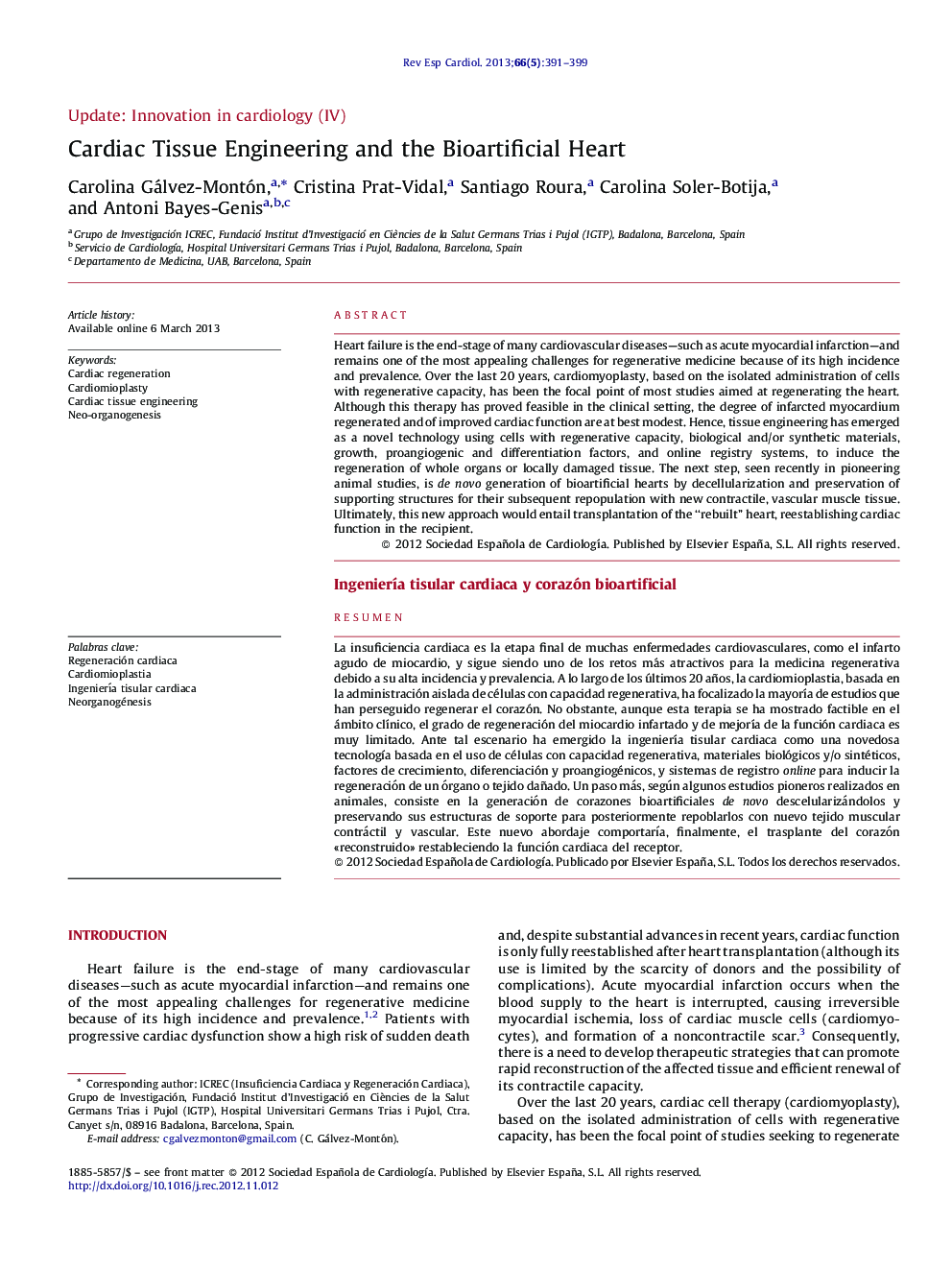| Article ID | Journal | Published Year | Pages | File Type |
|---|---|---|---|---|
| 3017974 | Revista Española de Cardiología (English Edition) | 2013 | 9 Pages |
Heart failure is the end-stage of many cardiovascular diseases—such as acute myocardial infarction—and remains one of the most appealing challenges for regenerative medicine because of its high incidence and prevalence. Over the last 20 years, cardiomyoplasty, based on the isolated administration of cells with regenerative capacity, has been the focal point of most studies aimed at regenerating the heart. Although this therapy has proved feasible in the clinical setting, the degree of infarcted myocardium regenerated and of improved cardiac function are at best modest. Hence, tissue engineering has emerged as a novel technology using cells with regenerative capacity, biological and/or synthetic materials, growth, proangiogenic and differentiation factors, and online registry systems, to induce the regeneration of whole organs or locally damaged tissue. The next step, seen recently in pioneering animal studies, is de novo generation of bioartificial hearts by decellularization and preservation of supporting structures for their subsequent repopulation with new contractile, vascular muscle tissue. Ultimately, this new approach would entail transplantation of the “rebuilt” heart, reestablishing cardiac function in the recipient.
ResumenLa insuficiencia cardiaca es la etapa final de muchas enfermedades cardiovasculares, como el infarto agudo de miocardio, y sigue siendo uno de los retos más atractivos para la medicina regenerativa debido a su alta incidencia y prevalencia. A lo largo de los últimos 20 años, la cardiomioplastia, basada en la administración aislada de células con capacidad regenerativa, ha focalizado la mayoría de estudios que han perseguido regenerar el corazón. No obstante, aunque esta terapia se ha mostrado factible en el ámbito clínico, el grado de regeneración del miocardio infartado y de mejoría de la función cardiaca es muy limitado. Ante tal escenario ha emergido la ingeniería tisular cardiaca como una novedosa tecnología basada en el uso de células con capacidad regenerativa, materiales biológicos y/o sintéticos, factores de crecimiento, diferenciación y proangiogénicos, y sistemas de registro online para inducir la regeneración de un órgano o tejido dañado. Un paso más, según algunos estudios pioneros realizados en animales, consiste en la generación de corazones bioartificiales de novo descelularizándolos y preservando sus estructuras de soporte para posteriormente repoblarlos con nuevo tejido muscular contráctil y vascular. Este nuevo abordaje comportaría, finalmente, el trasplante del corazón «reconstruido» restableciendo la función cardiaca del receptor.
